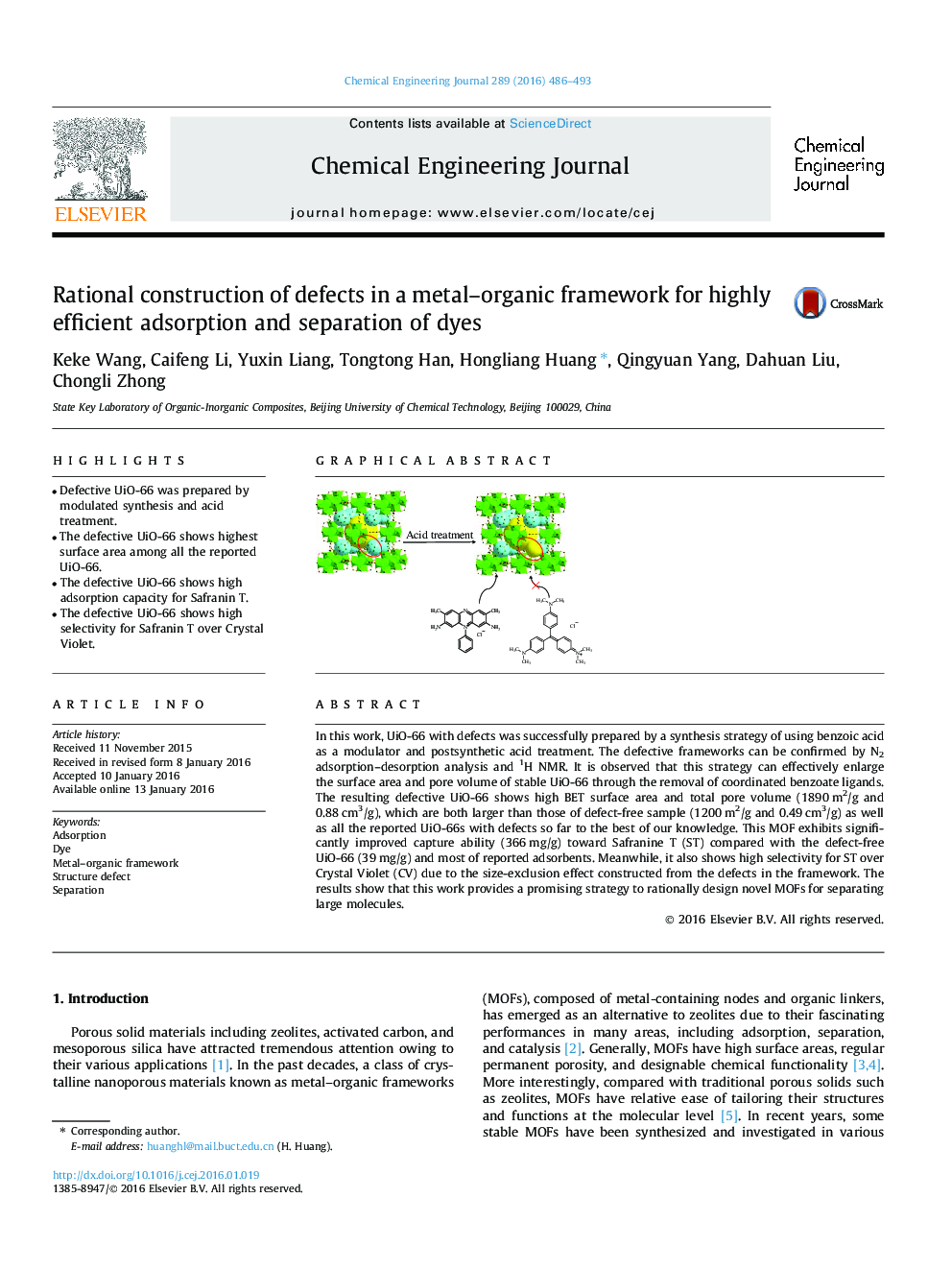| Article ID | Journal | Published Year | Pages | File Type |
|---|---|---|---|---|
| 145837 | Chemical Engineering Journal | 2016 | 8 Pages |
•Defective UiO-66 was prepared by modulated synthesis and acid treatment.•The defective UiO-66 shows highest surface area among all the reported UiO-66.•The defective UiO-66 shows high adsorption capacity for Safranin T.•The defective UiO-66 shows high selectivity for Safranin T over Crystal Violet.
In this work, UiO-66 with defects was successfully prepared by a synthesis strategy of using benzoic acid as a modulator and postsynthetic acid treatment. The defective frameworks can be confirmed by N2 adsorption–desorption analysis and 1H NMR. It is observed that this strategy can effectively enlarge the surface area and pore volume of stable UiO-66 through the removal of coordinated benzoate ligands. The resulting defective UiO-66 shows high BET surface area and total pore volume (1890 m2/g and 0.88 cm3/g), which are both larger than those of defect-free sample (1200 m2/g and 0.49 cm3/g) as well as all the reported UiO-66s with defects so far to the best of our knowledge. This MOF exhibits significantly improved capture ability (366 mg/g) toward Safranine T (ST) compared with the defect-free UiO-66 (39 mg/g) and most of reported adsorbents. Meanwhile, it also shows high selectivity for ST over Crystal Violet (CV) due to the size-exclusion effect constructed from the defects in the framework. The results show that this work provides a promising strategy to rationally design novel MOFs for separating large molecules.
Graphical abstractFigure optionsDownload full-size imageDownload as PowerPoint slide
